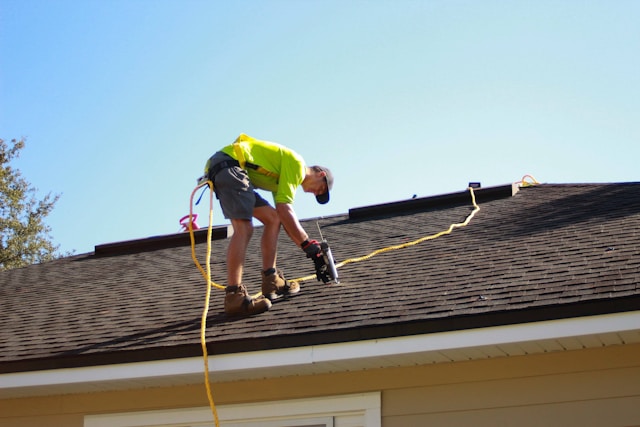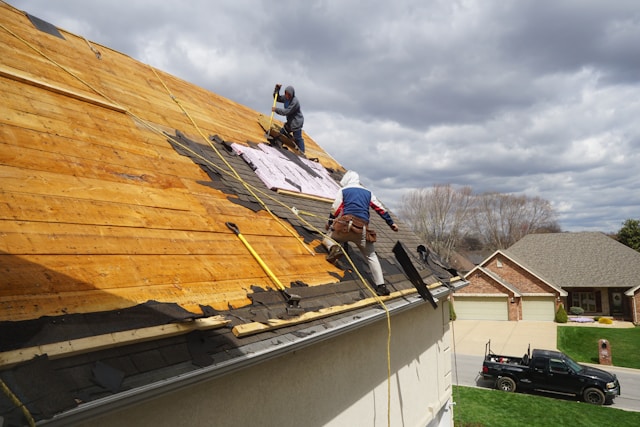
How to Spot Early Signs of Roof Damage
The roof is an essential component of any structure, offering vital protection against the elements and ensuring the safety and comfort of its occupants. Nevertheless, with time, roofs are subjected to different stressors such as the weather, aging, and other environmental conditions that result in damage. Detection of initial signs of roof problems is the key in order to avoid further damages and costly repairs. This article will present detailed information about early signs of roof damage, offering vital information for homeowners and managers, to prevent structural issues in their roofing before they occur.
To correctly identify the signals of the forthcoming defects of the roof, regular roof inspections are needed. It is recommended that inspections for this should be conducted twice in a year; in the spring and in the fall, hence all likely problems would be addressed in good time. In this case, a roofing contractor is best suited as he is experienced to identify small defects that a non-professional might overlook.
External Examination
Key Measures for Roof Protection
Missing or broken shingles are among the most obvious and common signs of roofing damage. Shingles play a crucial role in protecting the roof from water penetration and UV rays. Any decrease in their integrity can result in leaks and compromise the overall structure. When conducting a roof inspection, try to spot any shingles that are cracked, curled, blistered, or completely gone. Immediate replacement of broken shingles is very important in preserving the roof’s barrier against the elements.
Granule Loss
Most of the asphalt shingles have a layer of granules that serve as a UV radiation blocker and also improve the durability of the shingles. Over time, these granules may wear off, resulting in a loss of granules. Examine the gutters and downspouts for any accumulation of granules, as this could indicate the deterioration of the shingles. Granule loss in large quantities may require shingle replacement to avoid more damage.
Identifying Structural Roof Issues
Sagging rooflines or other deformed shapes are signs of structural problems. Damage to the roof deck or support structure may be the cause of such deformed shapes. Conduct a visual inspection of the roof from a distance to identify any irregularities in its outline. If a sagging or distorted area is detected, it is important to seek professional advice immediately in order to assess the extent of the damage and recommend what needs to be done.

Internal Examination
Detecting Roof Leaks
Signs of roof leaks often manifest as watermarks on the ceiling and walls. During a thorough interior inspection, focus on the ceiling and walls, particularly in areas near the attic or upper levels of the house, and check for discoloration or water stains. Recognising these stains early will help in stopping more water damage and mold growth, which is the cause of the leak.
Wet weather is the perfect time to detect roof leaks. When it’s raining, check the house for indications of dripping or staining water. Leaks may not necessarily be found exactly underneath the affected area, so it is very important to properly track the location to observe the water entry. The prompt detection of leaks helps prevent additional damage to the roof and to the interior of the house.

Roof Aging and Flashing Deterioration
Aging Roofs
Roofs are an aging part of the structure, as well as any other part of the building. For instance, the typical lifespan of asphalt shingles is from 20 to 30 years. The age of the roof is crucial in determining its susceptibility to damage. Shingle aging involves deterioration, loss of granules, and increased vulnerability to leaks. It is advised to prepare for a roof replacement or major repairs as the roof reaches the end of its useful life so as to prevent widespread damage.
Deterioration of Flashing
Roof penetration flashing is used to seal areas on the roof where there are penetrations, such as chimneys, vents, and skylights, to prevent water intrusion. Over time, flashing may decay due to exposure to the elements, leading to potential leak points. Inspect flashing during the roof inspection and replace any damaged or deteriorated sections as soon as possible.
Environmental Factors
Severe Weather Events
Roofs can be severely damaged by weather events, such as storms, hail, and strong winds. A roof should be examined after a severe weather event in order to check if there have been any signs of damage, for example, missing shingles, dents, and punctures. Timely addressing storm-caused damage can stop further problems and keep the roof’s structural integrity intact.
Overhanging Tree Branches
The overhanging branches of trees pose a potential threat to the roof, particularly during storms or strong winds. Falling branches can ruin shingles, gutters, and any other element of the roof. Trim the branches that overhang from time to time to reduce the risk of damage and prolong the roof’s life.
Even though homeowners can do visual inspections, it should be clear that untrained eyes cannot detect minor signs of roof damage. A roofing inspection that is done by a professional involves a comprehensive assessment of the structural strength and elements of the roof. These specialists may come with challenging views on potential issues that should be addressed and provide practical solutions.
Thus, the early identification of the initial symptoms of roof failure is a preventive and vital action in maintaining your home. Routine external and internal inspections enable homeowners to spot issues early so that a lot of money can be saved on repairs. These signs are key parameters for classifying the state of your roof. The concept of the impact of the environmental factors, the aging process and the requirement of the proper inspection is a must then to comes to roof maintenance.